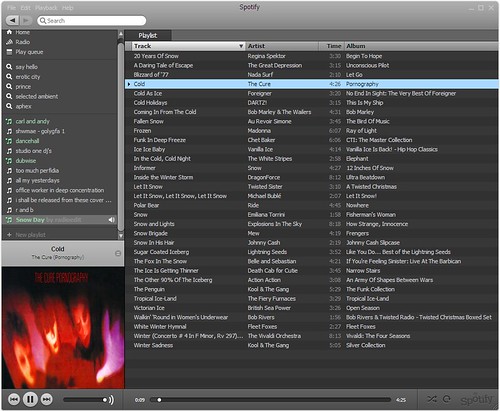This loosely follows on from the previous post about Twitter being a variant of blogging. Incidentally, normal service on this blog may be resumed at some point or possibly never. Anyway.
Sometimes I think almost EVERY form of publishing in social media can be considered a form of blogging. Is everything here blogging?
On Flickr, for example, you upload images which have dates and tags. YouTube and other video sharing sites let you upload video, again with dates and tags. There are subscription options in these too – you add people on Flickr and you subscribe to channels in YouTube. There are variants on other video sites. These “content services” also have feeds of course. They don’t look exactly like blogs but I’m saying the default view you get is incidental to this concept of them being about blogging. Of course, the default display of a blog is incidental. You could take feeds or content from any blog or set of blogs and display them in aggregate in a multitude of ways. The point is, all are about time-based publishing which is essentially all a blog is.
Facebook is like a huge group blog. The newest thing is at the top. Posting a status or whatever is obviously like doing a blog post, but almost everything else you do is subscription. Clicking Like for something is subscription. Writing a comment on a post is a form of subscription. Becoming a fan of a page is subscription. Responding to an event is subscription. And of course, adding a friend is a subscription. It can only be two-way, symmetrical. I tell people Facebook is weirder than blogging and Twitter because of the privacy stuff. There’s a grey area between private and public, but let’s forget about those aspects for now. Facebook is a huge group blog. The things that are slightly annoying on Facebook are the non-bloggy things, mainly the private inboxes. There’s your inbox for requests and your inbox for direct messages. Another thing, if you don’t respond to an event you are automatically subscribed to receive direct messages about that event. That’s annoying because automatic subscription to anything is not bloggy.
Stretching this even further – and this is highly provisional now – maybe a wiki page can be considered a form of blog. The time-based element is most apparent if you look at the history page. This page shows all the edits that have taken place. It looks like a blog, except that instead of different posts it’s the same post being refined over time by multiple authors. And of course there’s a feed of this history too.
Or, the other way around, maybe a blog can be considered a history for its AUTHOR. The author is a biological wiki changing over time! Changes are occurring in the author’s mind and each post is a snapshot in time. So each blog post is a wiki edit. Or at least an indication of one. (If you comment on my blog, I will read it and you will edit me slightly. And the potental future of the blog will change. Have fun.)
Starting an open content service like Twitter, YouTube or Facebook looks like so much fun. I would do it differently to those guys, natch. If I were starting such a service I would look at blogging in detail for which features I could borrow. This often happens subconciously as people have absorbed the customs and features of blogging. Maybe I could start by adapting an old UNIX command.
I’m abstracting features of software here. When I studied Computer Science, I went to a lecture about “computing in the real world” delivered by a software consultant. He said that he’d been asked to work with a prison for their database of inmates. Should they pay to develop an expensive new database system for the prison, from scratch? In a stroke of inspiration, he suggested they just adapt an existing hotel booking system. A prison is a hotel, except if you’re staying you can’t decide when you’re going to leave. On an abstract level, that’s the only functional difference. Inmates are guests.
That observation has always stuck with me and I’ve always tried to look at problems in a similar way.
Of course, not everything is blogging. Now go and eat your tea.
